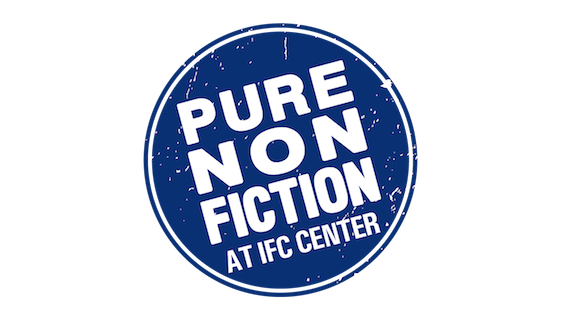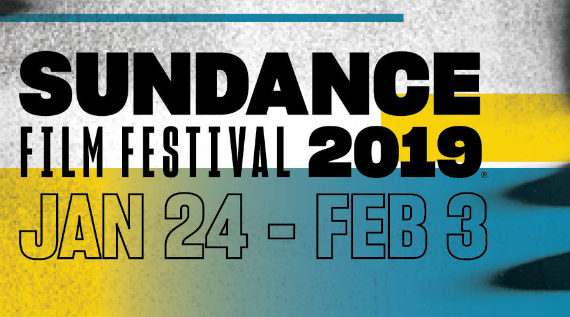
Jehane Noujaim's film THE SQUARE made waves this year after Netflix nabbed digital rights for it.
The film world remains roiled by digital technologies that are still transforming the way documentaries are made, funded, marketed and viewed. What follows is an interview with Thom Powers, programmer for documentaries at the Toronto International Film Festival (TIFF) and the Stranger Than Fiction series, as well as artistic director of the DOC NYC festival, about the changes being wrought by digital, and the state of documentaries in 2013. Click here for the 2012 State of Docs.
Rahul Chadha: Do you think that 2013 saw significant changes in the overall state of docs?
Thom Powers: One way to answer that question is to think about how docs are reaching audiences. Looking back on the 2013 Toronto International Film Festival, I think of three notable docs that sold to relative newcomers. One is THE SQUARE that sold to Netflix. Along with its acquisition of THE SHORT GAME, Netflix has announced itself as a staking more ground in the doc space. They hired Adam Del Deo, a filmmaker who collaborated with Jim Stern on docs like EVERY LITTLE STEP and SO GOES THE NATION and is now looking at new titles to acquire. Netflix has made a big impression with what they’ve done in fiction television with House of Cards. They’re talking about doing the same for documentary.
Another TIFF title was THE DOG that sold to Cinedigm and Drafthouse Films in a joint distribution agreement. Both of those entities are relative newcomers. Drafthouse is led by Tim League, who started Austin’s Alamo Drafthouse Cinema and has turned it into a growing chain of theaters. He brings a lot of acumen to the exhibition business and made an impression in 2013 with the release of THE ACT OF KILLING.
A third TIFF sale was SUPERMENSCH, acquired by RADiUS-TWC that had a very big year in theatrical docs, releasing 20 FEET FROM STARDOM, CUTIE AND THE BOXER and INEQUALITY FOR ALL. When you interviewed me on this blog after Sundance 2013, we talked about the surprise of RADiUS having acquired three docs. In 2014 they’re already scheduled to release Errol Morris’ THE UNKNOWN KNOWN and now SUPERMENSCH. I imagine they’ll be active buyers in months to come.
Chadha: Xbox Entertainment Studios recently commissioned a documentary series. It seems like part of the rise of digital distribution is that the entities funding content creation are also changing at a fundamental level. What do you think about the trend of digital distributors like Netflix commissioning work?
Powers: It used to be that digital distributors were a kind of second window for a film. They would let another distributor acquire the film and do the initial marketing. Then the digital distributor would follow, like a DVD distributor. Now digital distributors are moving to the front of the line to control content from the get-go. That creates new buyers vying for titles and is positive for filmmakers. However, it must be said that all these distribution deals still only cover a small percentage of the documentaries being made.
I haven’t paid close attention to the Xbox deal, but one thing we’re bound to see ahead–either in 2014 or later–will be a changing of documentary formats, including the opportunity for serialized content with films that can go beyond feature length. I think of past series like THE STAIRCASE that was on The Sundance Channel, or Jennifer Fox’s series FLYING: CONFESSIONS OF A FREE WOMAN, which I programmed at the SundanceNOW Doc Club platform.
These were serialized documentaries ahead of their time. I dare anyone to watch the first episode of THE STAIRCASE or FLYING: CONFESSIONS OF A FREE WOMAN and not want to compulsively watch all the other episodes. When those titles were released a few years ago, they were outliers. Normal distribution channels didn’t really know what to do with them. Now an audience has been trained for serial viewing thanks to shows like BREAKING BAD and THE WIRE.
Chadha: What about shorter content? I’m thinking specifically about Sean Dunne, how he gained a name for himself through two shorts that went viral before he made OXYANA.
Powers: That’s absolutely true. A company that continues to innovate in that area is Vimeo. This year Vimeo announced it would take on any TIFF film with a $10,000 minimum guarantee for pay-per-view distribution on its platform. Filmmakers had until the end of the year to take that deal, so we don’t know what’s going to come of it. But it was an interesting initiative, and one that I suspect will be developed further in 2014. I mentioned earlier that the vast majority of filmmakers don’t find themselves the subject of a bidding war at Toronto or Sundance or anywhere else. For those filmmakers, platforms like Vimeo can allow them to test their own entrepreneurial skills in reaching an audience and keep a larger share of royalties. That’s going to be interesting to watch.
Chadha: What do you think the implications of this trend are for theatrical distribution and festivals? Will the increased opportunities in digital distribution reduce the significance of theatrical and festival play?
Powers: I don’t see that being an issue. Theatrical play continues to be something that filmmakers crave, often against all good sense. Reading over our interview last year, I noticed that The New York Times had reviewed 800 feature films in 2012, which seemed like a shockingly high number. This year they reported that they reviewed 900 films, so a growth by more than 10%. I don’t see that dropping significantly in the near future. And festival play continues to be robust. I speak as someone who has started two festivals with my wife Raphaela–the DOC NYC festival, which just had its fourth year, and the Montclair Film Festival, which has its third year in 2014. The appetite for DOC NYC is such that it’s grown to become the country’s largest documentary festival. In the case of Montclair, a more regional festival, we doubled our size from year one to two. We’re now showing somewhere around 75 films and events.
Festivals are a curated proving ground for films no matter what their future life is going to be–whether it’s theatrical, digital or television. Festivals are the place where filmmakers first get to experience their films with audiences. Indeed, the more films get steered to digital platforms, where audiences are experiencing them on an on-demand basis, the more filmmakers are going to crave a live experience with an audience. Ricky Leacock used to say that having your film broadcast on television was like dropping a pebble down a well and never hearing it splash. The night of your broadcast you might know that hundreds of thousands of people are watching, but you never hear their laughter, see their reactions or hear their comments afterwards. That is a vital part of the process that drives filmmakers.
Chadha: I understand what you’re saying about how you lose something about the communal nature of watching film in a theater with an audience, but from an audience-size perspective it seems like CNN’s entry into the doc world has had a dramatic effect, with OUR NIXON and BLACKFISH, especially, as two good examples of that.
Powers: It’s very encouraging. As we talk about distribution channels that stood out in 2013, CNN is prominent. In the case of BLACKFISH, credit also goes to Magnolia Pictures for what they did theatrically. I remember at Sundance last January feeling distributors would be reticent about BLACKFISH after the poor theatrical fates of other films about animals in peril THE COVE and PROJECT NIM. I showed BLACKFISH at the Miami International Film Festival and could see audiences passionately respond. But that was also true for PROJECT NIM. Magnolia and CNN found the way to overcome whatever held back those other films.
CNN has remarkable resources in their ability to back documentaries with advertising and to put filmmakers on CNN shows. Not many other distributors can match that exposure. Now CNN is headed to Sundance with three films — IVORY TOWER; LIFE ITSELF, the Roger Ebert documentary by Steve James; and Joe Berlinger’s new documentary WHITEY. There was a recent article in which CNN was announcing a more aggressive play for feature-length docs on the channel.
Another player that will be interesting to watch is Al Jazeera America, which debuted in August and was courting filmmakers at TIFF and DOC NYC, among other festivals. It will be interesting to see how that will pay off in 2014.
Chadha: Both Sundance and the Ford Foundation’s JustFilms initiative saw changes in their leadership this year, with Cara Mertes leaving Sundance to go to JustFilms and Tabitha Jackson replacing her. These larger funding institutions have been branching out to fund things beyond films like interactive websites and apps. I’m not sure if they are taking money away from films to fund these other initiatives, but I’m curious what you think about that. And do you think there are other areas that funding institutions would do well to focus their energies?
Powers: Both of these organizations have a long history of supporting doc makers and are constantly adjusting their focus. You’re asking if ancillary projects will take away money from filmmakers? Ultimately, I think filmmakers benefit from exploring new initiatives.
Cara Mertes came to DOC NYC in November and turned her conversation into a listening session with documentary filmmakers in the audience. She’s only been in the job a few months. Tabitha Jackson has held her job even less time. She was in New York in December for the Sundance filmmaker orientation and I had a chance to meet with her. There are four areas where I think doc funding bodies should pay more attention.
The first, in addition to funding films, it’s important to think about legal defense for filmmakers. Increasingly we see doc makers under pressure. Last year Ken Burns and THE CENTRAL PARK FIVE team were in court against the New York City government that was seeking to get transcripts and other material turned over. In that case, the filmmakers came away victorious. Another example is VENUS AND SERENA for which the US Tennis Association is suing the filmmakers for usage of footage. Of course, it’s impossible to tell the story of these high-profile tennis players without including footage of tennis matches. Alex Gibney, who is the film’s executive producer, spoke about that case and other examples of free use at TIFF’s Doc Conference.
I would like to see an organization take the lead in finding a way to support independent filmmakers whose legal cases will set precedents for the whole field. In an older documentary structure, filmmakers were on the staff of networks. When Peter Davis faced a Congressional investigation for THE SELLING OF THE PENTAGON in the early 70s, he had the backing CBS News. He didn’t have to worry if he was going to lose his company or livelihood because there was an institution to back him up. Independent documentary filmmakers don’t have that, and increasingly, this kind of investigative journalism, or even just profile filmmaking, is being undertaken by independent filmmakers.
I’m inspired by the model that Pat Aufderheide and Peter Jaszi created when they wrote their report Reclaiming Fair Use out of American University. That report identified industry guidelines and standards that have given everyone in documentary–filmmakers, distributors and lawyers–a sense of appropriate boundaries in fair use. We could use institutions to similarly address questions of ethics in filmmaking, such as the questions raised in the CENTRAL PARK FIVE case, or the legal case over Joe Berlinger’s film CRUDE, when the oil company subpoenaed his tapes.
The second area for funders to think about is long-term support for filmmakers. If a funding body has $100,000 to give, do they give $10,000 grants to 10 filmmakers? Or do they give one $100,000 grant to one filmmaker, which will make a bigger difference in the ability of that filmmaker to finish a project. Right now, there are a healthy amount of the $10,000-type grants out there. God knows there can always be more, but we’ll take what we can get. What’s much harder to come by is the large sum of money that makes a meaningful difference in allowing a filmmaker to quit worrying about money and finish their project.
One strategy, instead of funding individual projects, is to support filmmakers for a series of projects. This is the model of the MacArthur genius grant that guarantees recipients a substantial amount of money over a five-year period of time. When you look at filmmakers who have received that grant like James Longley and Laura Poitras, it frees them to take more chances. I’m sure that Laura’s ability to take the risks she’s taken pursuing the Edward Snowden story have been greatly facilitated by the MacArthur.
A third area for funding bodies to pay attention to is the network of organizations that help filmmakers with outreach and distribution. When a filmmaker has spent a year or more wholly focused on the crafts of making the film, they often lack expertise in reaching an audience. What filmmakers need are like-minded specialists in those aspects of marketing that can support them. The ability of documentaries to reach wider audiences will greatly depend on the strength of those supporting organizations. One example is Working Films, which this year suffered the terrible loss of its co-founder Robert West to brain cancer at too young an age. But that organization is continuing on under the leadership of its other co-founder Judith Helfand and other directors trained under Robert West. They have years of experience in helping filmmakers find audiences. There are other similar organizations, and I hope funders will think about strengthening them.
The fourth opportunity is how institutional funders can work with crowdfunding. Crowdfunding, we can now say with confidence, is not a fad. The number of projects using it continues to grow. One way for institutional funders to leverage this energy is to offer matching funds for crowdfunding,as we’re accustomed to during public radio pledge drives. That way both the institution and the crowdfund contributors would know their money is going even further.
Chadha: A lot of funding mechanisms require that films that apply for money have a social issue focus. Do you see that as a limitation on the types of stories that are told? Or that it has an effect on how documentaries are perceived in a wider public sphere?
Powers: The social impact kind of filmmaker is always going to have a higher percentage of philanthropic dollars flowing to it, but the space for artistic documentaries is growing. I think of a funding body like Cinereach, which foregrounds the artistry of filmmaking. I think of Impact Partners, the equity funding organization, which has social issues in mind but is very attuned to the artistry of filmmaking as well. That awareness increasingly comes up in my conversations with other funders.
Chadha: The piece you wrote in 2008 on the dearth of doc criticism seems to have a long shelf life. What do you think about the state of criticism in 2013, did it improve? Are critics talking about the right things?
Powers: I wish an organization like Cinema Eye or Nonfics.com would compile a list of the top 10 best pieces of doc criticism each year, because it’s a list that I would like to see and I don’t have time to compile myself. I think that there are signs of positive growth in the area of documentary criticism. I would point to David Edelstein’s article in New York Magazine in April. People can quibble with different aspects of it, but he’s covering a lot of territory. The central point he makes is that documentary film is not a single genre, it’s an umbrella that encompasses many different things. This year we have terrific examples of that multiplicity. I’d point to investigation films like BLACKFISH and DIRTY WARS; essay films like FIRST COUSIN ONCE REMOVED or A PERVERT’S GUIDE TO CINEMA; music films like MUSCLE SHOALS and 20 FEET FROM STARDOM; observational documentaries like THE CRASH REEL and GIDEON’S ARMY; artist profiles like FAR OUT ISN’T FAR ENOUGH and CUTIE AND THE BOXER; first person films like FIRST COMES LOVE; archival films like LET THE FIRE BURN; and films blurring boundaries like THE MISSING PICTURE. That list could get much longer. Another positive sign for documentary criticism is the emergence of places like Nonfics.com and the column that Anthony Kaufman does on SundanceNOW.
On the flip side, one piece of writing that raised my hackles was an article that David Thomson wrote in October in The New Republic. Last year in our conversation I expressed the hope that journals that take ideas seriously like The New Republic and The Atlantic Monthly could become forums for good writing about documentary film. Unfortunately what Thomson wrote has a very reductive idea of documentary. The piece–subtitled “The Scope and Limits of Documentary”–is ostensibly a review of Errol Morris’ film THE UNKNOWN KNOWN, but turns into a more general piece where Thomson holds documentary up to a litmus test of whether it’s effective at exposing government lies. Whereas Edelstein takes an expansive view of documentary can be, Thomson’s is very narrow. It makes you wonder how much documentary film Thomson is actually watching because the only directors he name-checks are Errol Morris, Ken Burns, Fred Wiseman and films by Werner Herzog and Marcel Ophuls. He makes no reference to the vitality of filmmakers that have risen up in the last decade or two.
One of Thomson’s lines that stood out to me was, “The chances of documentary getting at crimes and follies in government in time to do something about them are diminishing.”
That is bizarrely timed in a year when Laura Poitras was instrumental in working with the whistle-blower Edward Snowden. Many in government and journalism say Snowden’s leak is more devastating and revelatory than the Pentagon Papers. In Alex Gibney’s film WE STEAL SECRETS, he points out that it becomes harder for the government to cover up secrets in the era that’s so reliant on technology.
Two other cases from the past year that demonstrate documentaries holding government accountable: THE INVISIBLE WAR galvanized Senator Gillibrand to take action on sexual abuse in the military. And New York’s mayor elect Bill DeBlasio has vowed to settle THE CENTRAL PARK FIVE case; credit must go to Sarah Burns for keeping that story alive with her father Ken Burns and husband David McMahon.
In another striking quote from Thomson’s article, he writes, “If you want a thorough exploration of any topic, go for a book.” As if documentaries are made irrelevant by the existence of a book on the same subject.
It makes me think of a conversation I once had with Robert Drew, who pioneered modern documentary along with Ricky Leacock, D.A. Pennebaker and others. When Drew was working at Time-Life publications in the 1950s, he was using their resources to invent new camera technology that would make observational documentary possible. He wanted to bring these stories to a wider audience, but he never imagined that a documentary would compete with a book. He imagined a time when a documentary would awaken an interest in a viewer that would send them to other materials–a magazine article or a book. And that each of these different media could perform different roles.
Now we see more filmmakers working in conjunction with writers on simultaneous efforts. A good example from 2013 is DIRTY WARS, where Jeremy Scahill, who is featured in the film, released his book by the same title with a greater depth of reporting than you could ever fit in a film. That book standing on its own wouldn’t have the same reach as a film. Another filmmaker who took that path is Charles Ferguson who, after he made INSIDE JOB, wrote the book Predator Nation. When Errol Morris made STANDARD OPERATING PROCEDURE, he collaborated with Philip Gourevitch on a book. I think we’re going to be seeing a lot more of that.
Chadha: Scott Tobias’ year-end piece for The Dissolve, along with the one in Sight and Sound by Robert Greene, are two pieces interested in the formal widening of documentary. Do you think that idea of documentary is something that’s yet to take root more widely?
Powers: Indeed, the public could use some widening of its perception and those voices are increasing. Several years ago when AJ Schnack described to me his vision for Cinema Eye Honors, that was a big motivation for him and continues to be. At the time was that were no significant awards honoring documentary craft like editing or cinematography. Cinema Eye has done a lot to legitimize that.
Chadha: What trends are you keeping an eye on in the coming year?
Powers: Digital distribution will be a significant factor. One aspect is how much filmmakers can control of their digital rights. You should link to Liesl Copeland’s talk from TIFF Doc Conference called “Show Us the Numbers.” It contains a lot of important reflections on the crossroads we’re now at with digital distribution. My experience after two years of curating the SundanceNOW Doc Club gives me the feeling that we’re just beginning to understand what we can do with widening audiences on a digital platform. One thing that’s powerful is the ability to give new life to older titles. At Stranger Than Fiction, I’ve noticed whenever I show a doc that’s several years old — even an outright classic like GREY GARDENS — there’s always a new audience.
As digital rights become more important, it’s a whole new layer for filmmakers to grapple with in contract negotiations. Increasingly we see filmmakers with the capability to digitally distribute films from their own website, or sell their own DVDs when they’re doing live appearances, or to make their own deals for speaking engagements. They’re putting in the time and energy to make these things happen and they want a greater share of royalties for these situations. As I’ve watched deals get made in 2013, I’ve seen a lot of filmmakers be frustrated by the inflexibility of larger companies at recognizing these efforts.
The specter that should haunt all filmmakers is that of THINKFilm that had a tremendous library of docs including Oscar winners like BORN INTO BROTHELS and TAXI TO THE DARK SIDE. But since Think went bankrupt, those titles have been in legal limbo. The contract language that stipulates a filmmakers rights revert back to them in case of a bankruptcy doesn’t have any force. As a result, all those great titles in the Think library such as MURDERBALL, SPELLBOUND, and MONDOVINO can’t be found on digital platforms like iTunes.
One possible safeguard to your distributor going out of business is if a filmmaker retains the right to do some aspect of self-distribution. This is something that filmmakers and distributors need to come to terms with. The distributors who figure out a way to carve out these opportunities for filmmakers are going to have a real edge in a more competitive landscape. As filmmakers choose between deals, a big factor in their decision making–sometimes even more than the advance being paid–is the ability to have control.
[This Q&A was edited for length and clarity.]





